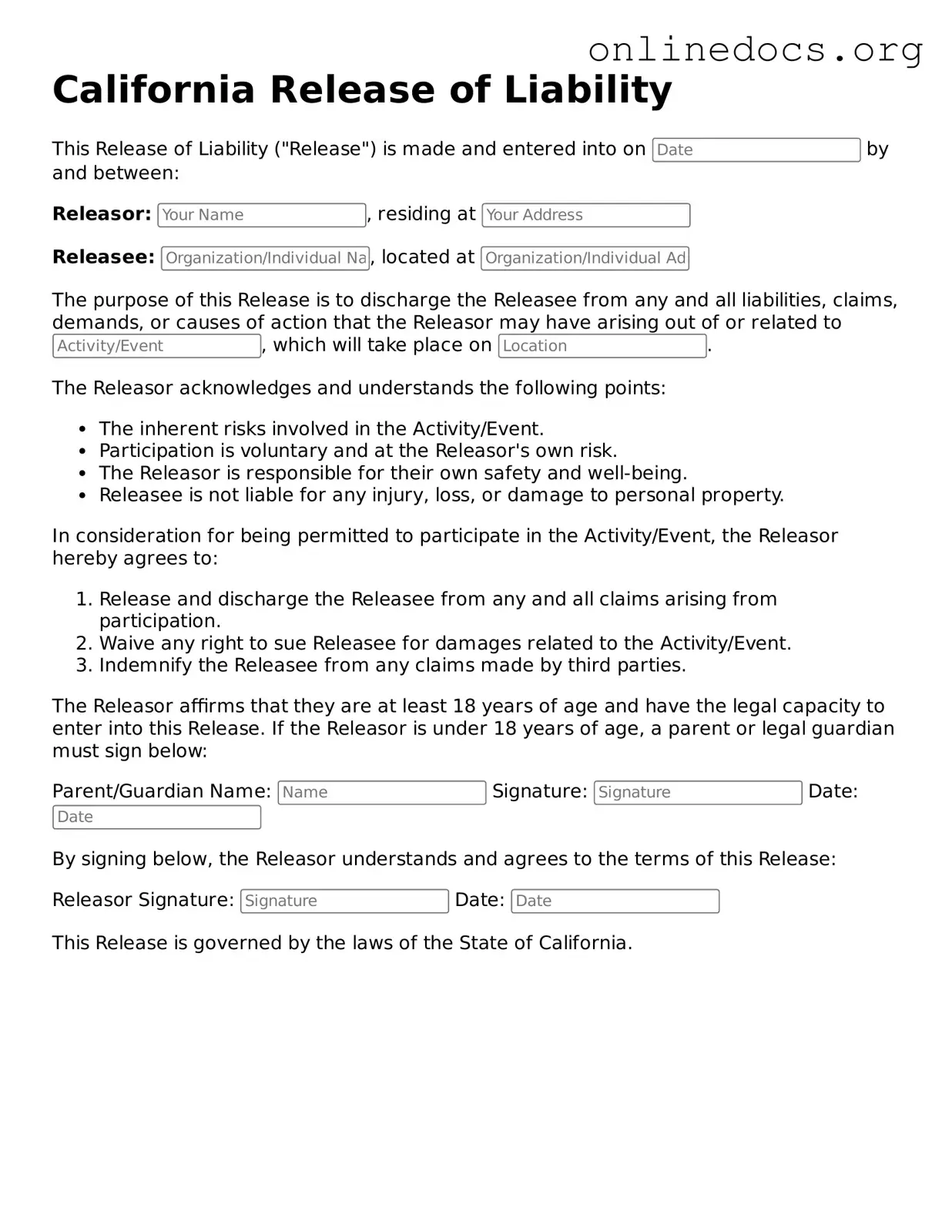The Waiver of Liability form is quite similar to the California Release of Liability form. Both documents serve to protect an organization or individual from legal claims resulting from injuries or damages that may occur during an activity. The Waiver of Liability requires participants to acknowledge the risks involved and voluntarily give up their right to sue, much like the California form does. This helps ensure that participants understand the potential dangers and agree to take responsibility for their own safety.
The Indemnity Agreement also shares similarities with the California Release of Liability. This document not only releases one party from liability but also requires the other party to compensate for any losses or damages incurred. Both forms aim to limit the financial exposure of one party, but the Indemnity Agreement goes a step further by providing a promise of reimbursement in case of a claim or lawsuit.
The Hold Harmless Agreement is another document that functions similarly to the California Release of Liability. This agreement protects one party from being held liable for any injuries or damages that occur during a specific event or activity. Participants agree not to hold the other party responsible, which is a key feature also found in the Release of Liability form. Both documents emphasize the importance of personal responsibility in potentially risky situations.
The Consent Form is often used in situations where individuals participate in activities that may involve some risk. Like the California Release of Liability, a Consent Form informs participants of the risks and requires their agreement to proceed. While the Consent Form focuses more on obtaining permission, it still serves to limit liability for the organizing party, similar to the Release of Liability.
The Participant Agreement is another document that resembles the California Release of Liability. This agreement outlines the expectations and responsibilities of each party involved in an activity. It typically includes a clause that releases one party from liability, similar to the Release of Liability form. Both documents aim to clarify the terms of participation and protect against legal claims.
The Medical Release Form, while primarily focused on health-related issues, has similarities to the California Release of Liability. This form allows medical professionals to treat an individual in case of an emergency. It often includes a waiver of liability for medical providers, protecting them from legal claims related to treatment. Like the Release of Liability, it emphasizes informed consent and personal responsibility.
The Event Liability Waiver is another document that closely mirrors the California Release of Liability. This waiver is typically used for events, requiring participants to acknowledge the risks involved and release the event organizers from liability. Both documents serve to protect the organizers from claims arising from injuries or accidents that may occur during the event.
To ensure your wishes are honored, creating a robust Last Will and Testament framework is essential. For guidance on drafting this important legal document, refer to the resource on consulting a comprehensive Last Will and Testament.
The Volunteer Waiver is similar to the California Release of Liability, particularly in its application to volunteer activities. Volunteers often sign this waiver to acknowledge the risks associated with their work and to release the organization from liability. Both documents serve to protect organizations while ensuring that volunteers are aware of their responsibilities and the potential dangers involved.
Finally, the Rental Agreement often includes a liability waiver that is akin to the California Release of Liability. When renting equipment or property, renters typically agree to take responsibility for any damages or injuries that occur during their use. This agreement limits the liability of the property owner, similar to how the Release of Liability functions, ensuring that both parties understand their rights and obligations.
